To clean air conditioner ducts, first, turn off the unit. Remove vent covers and vacuum loose debris. Use a stiff brush to scrub inside the ducts. For stubborn dirt, hire a professional duct cleaning service.
Ensuring your home’s air quality is paramount, and a key player in this game is your air conditioner ducts. Over time, these ducts accumulate dust, mold, and allergens, affecting both your system’s efficiency and the air you breathe. If you’re a novice in the realm of HVAC maintenance, fear not. In this guide, we’ll walk you through the essential steps on how to clean air conditioner ducts. It’s a simple yet crucial process that can significantly enhance the performance of your AC system while promoting a healthier living environment.
Understanding Air Conditioner Ducts

A. Purpose of Air Conditioner Ducts:
1. Air Distribution:
The primary purpose of air conditioner ducts is to distribute conditioned air throughout a building or a specific space. The ductwork acts as a network of pathways that carry the cooled or heated air from the HVAC (Heating, Ventilation, and Air Conditioning) system to different rooms.
2. Temperature Control:
Ducts help in regulating and maintaining the desired temperature in various parts of a building. They allow for precise control over the amount of conditioned air delivered to different zones or rooms.
3. Ventilation:
Air ducts play a crucial role in the ventilation of indoor spaces. They facilitate the exchange of indoor and outdoor air, helping to remove pollutants and maintain indoor air quality.
4. Humidity Control:
Ducts contribute to controlling the humidity levels within a building by distributing conditioned air and promoting proper airflow. This is important for comfort and preventing issues like mold growth.
B. Types of Duct Systems:

1. Supply Ducts:
These ducts carry conditioned air from the HVAC system to the various rooms or zones in a building. They are responsible for distributing cool or warm air as needed.
2. Return Ducts:
Return ducts transport air from the indoor spaces back to the HVAC system. This air is then filtered, treated, and conditioned before being recirculated.
3. Exhaust Ducts:
In addition to supply and return ducts, some systems have exhaust ducts that expel air from specific areas, such as kitchens or bathrooms. This helps in removing stale air and controlling indoor air quality.
4. Transfer Ducts:
Transfer ducts move air from one space to another within the building. They are often used to balance temperature and airflow between different zones.
C. Components of Air Ducts and Their Functions:

1. Air Handlers:
These are devices within the HVAC system responsible for circulating and conditioning air. They typically contain components like fans, heating coils, and cooling coils.
2. Ductwork:
The ductwork itself is a system of tubes or channels that direct the flow of air. It includes supply ducts, return ducts, and sometimes exhaust or transfer ducts.
3. Registers and Grilles:
Registers and grilles are openings in the walls, ceilings, or floors where air enters or exits the duct system. They can be adjusted to control the airflow and distribution of conditioned air.
4. Dampers:
Dampers are devices placed within the ducts to regulate or control the flow of air. They can be adjusted to balance airflow between different zones or rooms.
5. Filters:
Air filters are placed in the return ducts to capture dust, dirt, and other particles from the incoming air. They help maintain clean indoor air and protect the HVAC system components.
Understanding these components and their functions is essential for the proper design, installation, and maintenance of air conditioner duct systems. Regular inspection and maintenance are crucial to ensure optimal performance and energy efficiency.
Importance of clean air conditioner ducts
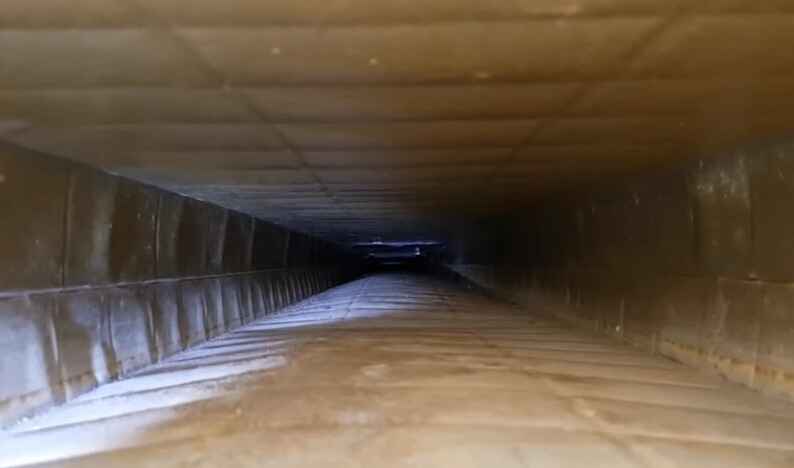
Clean air conditioner ducts play a crucial role in maintaining indoor air quality and ensuring the efficiency and longevity of your HVAC (Heating, Ventilation, and Air Conditioning) system. Here are some key reasons highlighting the importance of clean air conditioner ducts:
1. Improved Indoor Air Quality (IAQ):
Over time, dust, dirt, mold, bacteria, and other contaminants can accumulate in the ductwork of your HVAC system. When the system operates, these particles can be circulated throughout your home or office, leading to poor indoor air quality. Regular duct cleaning helps remove these contaminants, promoting cleaner and healthier air.
2. Allergy and Asthma Prevention:
Dirty air ducts can harbor allergens and irritants, such as dust mites, pet dander, and mold spores. Individuals with allergies or asthma may experience worsened symptoms if exposed to these contaminants. Clean air ducts contribute to a healthier indoor environment, reducing the risk of respiratory issues.
3. Energy Efficiency:
Accumulated debris in air ducts can restrict the airflow, forcing the HVAC system to work harder to maintain the desired temperature. This increased workload can lead to higher energy consumption and, consequently, higher utility bills. Clean ducts allow for better airflow, promoting energy efficiency and reducing the overall cost of operating your HVAC system.
4. Extended Equipment Lifespan:
A clean HVAC system is less likely to experience strain and wear, leading to a longer lifespan for the equipment. Regular maintenance, including duct cleaning, can help prevent breakdowns and extend the longevity of your heating and cooling systems.
5. Odor Control:
Mold, bacteria, and other contaminants in dirty air ducts can produce unpleasant odors that circulate throughout your living or working space. Cleaning the ducts eliminates these sources of odor, leaving the air smelling fresher.
6. Enhanced Comfort:
A clean HVAC system distributes air more evenly, ensuring consistent temperature levels throughout your home or office. This contributes to a more comfortable living or working environment.
7. Prevention of Mold Growth:
Dark and damp environments within ductwork provide an ideal breeding ground for mold. Mold spores can be circulated through the air, leading to potential health issues. Regular duct cleaning helps prevent mold growth and ensures a healthier indoor environment.
8. Compliance with Health and Safety Standards:
In some commercial settings, there may be health and safety regulations that require regular HVAC system maintenance, including air duct cleaning. Adhering to these standards is essential for the well-being of occupants and compliance with industry regulations.
In summary, clean air conditioner ducts are essential for maintaining good indoor air quality, promoting energy efficiency, preventing respiratory issues, extending the lifespan of HVAC equipment, and creating a comfortable and safe living or working environment. Regular inspection and cleaning of ductwork are recommended as part of a comprehensive HVAC maintenance plan.
Signs that Your Air Conditioner Ducts Need Cleaning

Regular maintenance of your air conditioner ducts is essential to ensure optimal performance and indoor air quality. Here are some signs that may indicate your air conditioner ducts need cleaning:
1. Visible Mold or Mildew:
If you see any signs of mold or mildew inside the ducts or around the vents, it’s a clear indicator that cleaning is necessary.
2. Visible Dust and Debris:
If you notice an accumulation of dust and debris around the vents or visible inside the ducts, it’s a sign that the system needs cleaning.
3. Unexplained Increase in Energy Bills:
Clogged or dirty ducts can cause your HVAC system to work harder, leading to increased energy consumption and higher bills. If you notice a sudden spike in your energy costs, it may be time to inspect and clean the ducts.
4. Reduced Airflow:
Poor airflow from the vents is a common sign of duct issues. If some rooms are not receiving adequate airflow or if you notice a decrease in overall airflow, it might be due to clogged ducts.
5. Musty Odors:
Unpleasant odors emanating from the vents can be a sign of mold or mildew growth inside the ductwork. Cleaning can help eliminate these odors and improve indoor air quality.
6. Allergy Symptoms:
If you or your family members experience increased allergy symptoms or respiratory issues when the HVAC system is running, it could be due to the presence of allergens in the ducts. Cleaning can reduce the allergen levels and improve indoor air quality.
7. Insect or Rodent Infestation:
If you notice signs of pests in or around your ducts, such as droppings or nests, it’s essential to clean the ducts to eliminate the contaminants and prevent further infestation.
8. Age of the Ductwork:
Over time, ductwork can accumulate dust, dirt, and debris. If your ducts are old or haven’t been cleaned for an extended period, it’s a good idea to schedule a cleaning.
9. Visible Debris Around HVAC Components:
Check the components of your HVAC system, such as the coils and blower, for any visible dust or debris. If these components are dirty, it may indicate that the ducts are also in need of cleaning.
10. Previous Renovations or Construction:
If you’ve recently undergone renovations or construction in your home, dust and debris from these activities can find their way into the ductwork, necessitating a cleaning.
Regular professional inspections and cleanings, typically every 3 to 5 years, can help ensure that your air conditioner ducts remain clean and functional. If you notice any of these signs, it’s advisable to consult with HVAC professionals for a thorough inspection and cleaning.
Preparing for AC Duct Cleaning
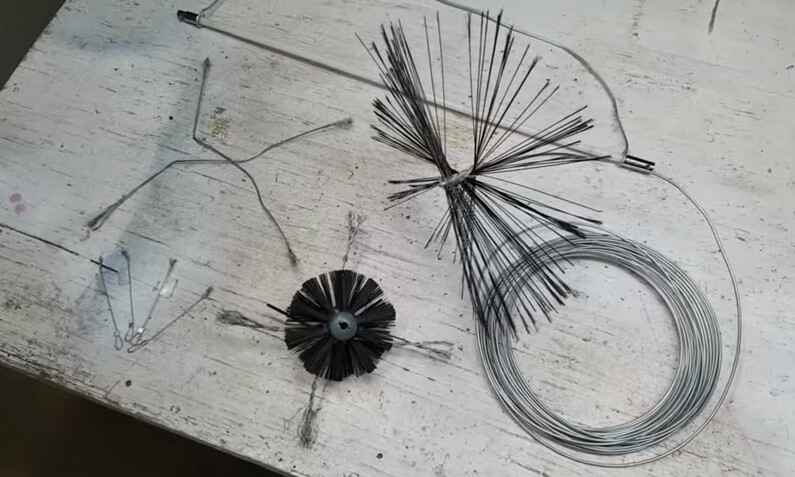
Cleaning AC ducts is an essential part of maintaining a healthy indoor environment and improving the efficiency of your HVAC system. Here’s a step-by-step guide to help you prepare for AC duct cleaning:
A. Gathering Necessary Tools and Equipment:
Protective Gear:
Safety goggles
Dust mask or respirator
Gloves
Cleaning Tools:
Screwdrivers
Duct brushes or vacuum attachments
Soft-bristle brush
Microfiber cloths or rags
Disposable bags for debris
Inspecting Tools:
Flashlight
Inspection mirror (if needed)
Camera or smartphone for documentation
Sealing Materials:
Duct tape or foil tape for sealing access points after cleaning
B. Ensuring Safety Measures Are in Place:

1. Protective Measures:
Wear appropriate protective gear, including safety goggles, a dust mask or respirator, and gloves to safeguard yourself from dust and potential allergens.
2. Ventilation:
Ensure proper ventilation in the area where you are working. Open windows and doors to allow fresh air to circulate and help disperse any airborne particles.
3. Secure Access Points:
Cover vents and registers with plastic sheeting or use duct tape to prevent dislodged dust and debris from entering the living space.
C. Turning off the HVAC System:
1. Locate the Thermostat:
Turn off the HVAC system from the thermostat. Set it to the “off” position to prevent the system from turning on during cleaning.
2. Cutting Power:
As an additional precaution, cut off the power supply to the HVAC system. This can be done by switching off the circuit breaker that controls the HVAC unit.
3. Wait for System Shutdown:
Allow some time for the HVAC system to completely shut down before proceeding with the duct cleaning.
By following these steps, you’ll be well-prepared for AC duct cleaning while ensuring your safety and the efficiency of the cleaning process.
Step-by-Step Guide to Cleaning Air Conditioner Ducts
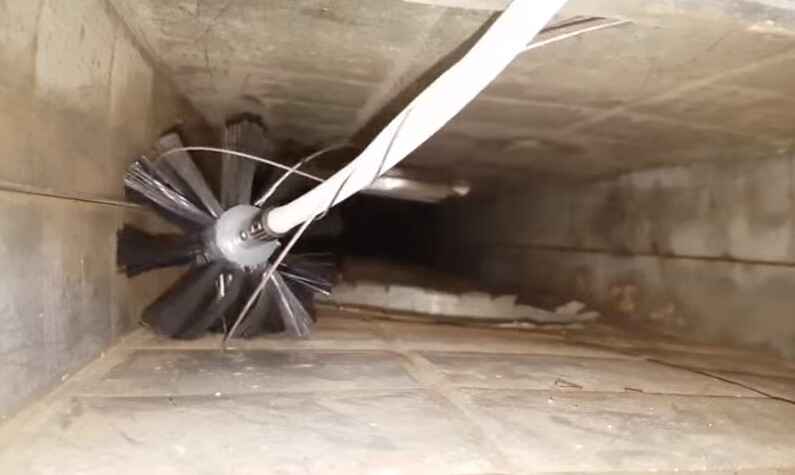
Cleaning air conditioner ducts is an essential task to maintain indoor air quality and ensure the efficiency of your HVAC system. Here’s a step-by-step guide to help you clean your air conditioner ducts:
A. Removing Vent Covers:
Turn off the air conditioner: Before starting, make sure the air conditioner is turned off to ensure safety.
Locate vent covers: Identify and locate all the vent covers throughout your home.
Use a screwdriver or follow manufacturer instructions: Remove the screws securing the vent covers or follow the specific instructions provided by the manufacturer to take them off.
B. Inspecting and Cleaning Vents:
Inspect vents for visible dust and debris: Examine the exposed parts of the ducts for any visible dirt, dust, or debris.
Wipe down vent covers: Use a damp cloth to wipe down the vent covers and remove any surface dust. You can also wash them with mild soap if needed.
C. Using a Vacuum to Remove Loose Debris:
Attach a nozzle to the vacuum: Use a vacuum cleaner with a nozzle attachment to reach into the ducts.
Vacuum loose debris: Carefully vacuum the visible loose debris from the exposed areas of the ductwork. Move the nozzle along the duct surfaces to capture as much debris as possible.
D. Cleaning Duct Surfaces with a Damp Cloth or Brush:
Dampen a cloth or use a brush: Dampen a cloth with a mixture of water and mild detergent or use a soft brush suitable for cleaning duct surfaces.
Wipe down duct surfaces: Reach into the ducts and wipe down the inner surfaces with the damp cloth or brush. This will help remove any remaining dust or dirt.
E. Sanitizing and Deodorizing if Necessary:
Optional sanitizing step: If there are concerns about mold or bacteria, you can use a specialized duct cleaning spray or a mixture of water and white vinegar to sanitize the ducts. Follow product instructions carefully.
Deodorize the ducts: If there are any unpleasant odors, consider using an HVAC deodorizing spray following the manufacturer’s guidelines.
F. Replacing Vent Covers:
Dry vent covers: Ensure that the vent covers are completely dry before placing them back.
Align and secure vent covers: Align the vent covers properly and secure them in place using screws or following the manufacturer’s instructions.
G. Turn On the HVAC System
After completing the cleaning process, turn the power back on at the circuit breaker and restart your HVAC system. Monitor its performance to ensure everything is functioning correctly.
Regularly cleaning your air conditioner ducts can contribute to better indoor air quality and energy efficiency. If you’re unsure or uncomfortable with any step, it’s advisable to consult with a professional HVAC technician for assistance.
Common Mistakes to Avoid

Cleaning air conditioner ducts is an essential part of maintaining a healthy indoor environment and ensuring the efficient operation of your HVAC system. However, there are common mistakes that people make when attempting to clean air conditioner ducts. Here are some of them:
1. Not turning off the HVAC system:
Always turn off the heating, ventilation, and air conditioning (HVAC) system before attempting to clean the ducts. This prevents the system from circulating dust and debris throughout your home during the cleaning process.
2. Neglecting safety precautions:
Wear appropriate safety gear, such as gloves, goggles, and a mask, to protect yourself from dust, debris, and potential contaminants present in the ducts.
3. Using improper tools:
Using the wrong tools can damage the ductwork or be ineffective in removing built-up debris. Make sure to use brushes, vacuums, and other tools specifically designed for duct cleaning.
4. Ignoring the air filter:
Neglecting to replace or clean the air filter regularly can lead to a buildup of dust and debris in the ducts. A dirty filter can also reduce the overall efficiency of your HVAC system.
5. Incomplete duct inspection:
Before cleaning, inspect the ducts for any signs of damage, leaks, or mold growth. Failing to address these issues before cleaning can lead to ineffective cleaning and potential health hazards.
6. Incomplete cleaning:
Ensure that you clean the entire duct system, including the main trunk lines and all branches. Neglecting certain areas can result in the re-circulation of contaminants.
7. Not sealing access points properly:
After cleaning, make sure to properly seal all access points and joints to prevent air leaks. Inadequate sealing can compromise the efficiency of your HVAC system.
8. Overlooking insulation damage:
If your ducts are insulated, be cautious not to damage the insulation during the cleaning process. Damaged insulation can compromise energy efficiency and indoor comfort.
9. DIY when professional help is needed:
While some duct cleaning tasks can be done by homeowners, more extensive issues may require professional assistance. If you are unsure or if you encounter problems beyond your expertise, it’s best to consult with a qualified HVAC technician.
10. Ignoring the ductwork’s cleanliness over time:
Regular maintenance is key. Don’t wait until your ducts are excessively dirty before cleaning. Establish a schedule for routine maintenance to prevent the accumulation of dust and debris.
If you’re uncertain about cleaning your air conditioner ducts, it’s advisable to consult with a professional HVAC technician. They can assess the condition of your ductwork and recommend appropriate cleaning and maintenance procedures.
Benefits of regular duct cleaning
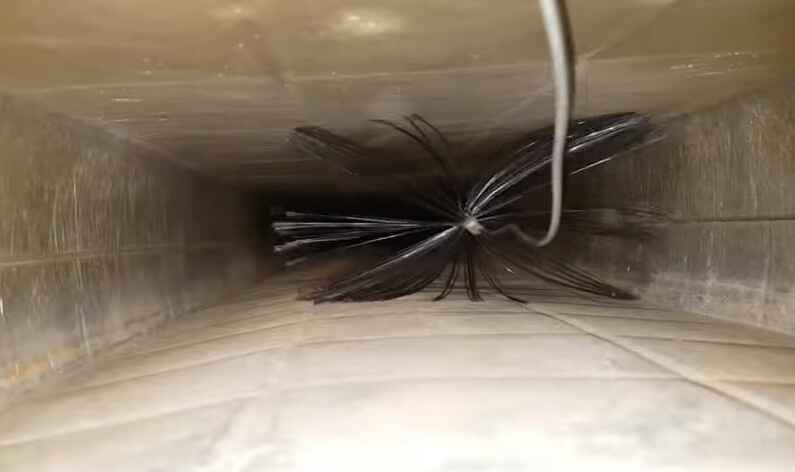
Regular air duct cleaning can offer several benefits for both your health and the efficiency of your HVAC (heating, ventilation, and air conditioning) system. Here are some key advantages:
1. Improved Indoor Air Quality:
Removes dust, dirt, pollen, and other allergens: Over time, air ducts can accumulate a significant amount of airborne particles. Cleaning the ducts helps to reduce the presence of these particles in the air, leading to improved indoor air quality.
2. Health Benefits:
Reduces allergens and irritants: Clean air ducts mean fewer allergens and irritants circulating in the air, which can be particularly beneficial for individuals with allergies, asthma, or respiratory conditions.
3. Enhanced HVAC System Efficiency:
Prevents clogs and blockages: Regular cleaning prevents the accumulation of debris, dust, and other particles in the ducts, ensuring that air can flow freely. This helps the HVAC system operate more efficiently, reducing energy consumption and potentially extending the system’s lifespan.
4. Energy Savings:
Improved airflow: A clean HVAC system operates more efficiently, which can lead to energy savings. When air flows freely through the system, it doesn’t have to work as hard to maintain the desired temperature, resulting in lower energy bills.
5. Odor Removal:
Eliminates unpleasant odors: Mold, mildew, and other contaminants in the ducts can contribute to unpleasant odors circulating throughout your home. Cleaning the ducts helps eliminate these odors, creating a fresher indoor environment.
6. Prevents Mold Growth:
Removes moisture: If there is moisture in your ducts, it can create an environment conducive to mold growth. Regular cleaning helps to eliminate moisture and prevent the development of mold, which can have serious health implications.
7. Extended Equipment Lifespan:
Reduces strain on the system: When the HVAC system doesn’t have to work as hard due to clean and unobstructed ducts, it experiences less wear and tear. This can contribute to a longer lifespan for your heating and cooling equipment.
8. Improved Airflow:
Enhances the overall airflow: Clean ducts facilitate better airflow, ensuring that conditioned air reaches all areas of your home more effectively. This can lead to more consistent temperatures throughout your living spaces.
9. Compliance with Warranty Requirements:
Some HVAC manufacturers require regular maintenance, including duct cleaning, to maintain the warranty on their equipment. Regular cleaning helps ensure that you meet these requirements.
Tips for Maintaining Clean Air Conditioner Ducts
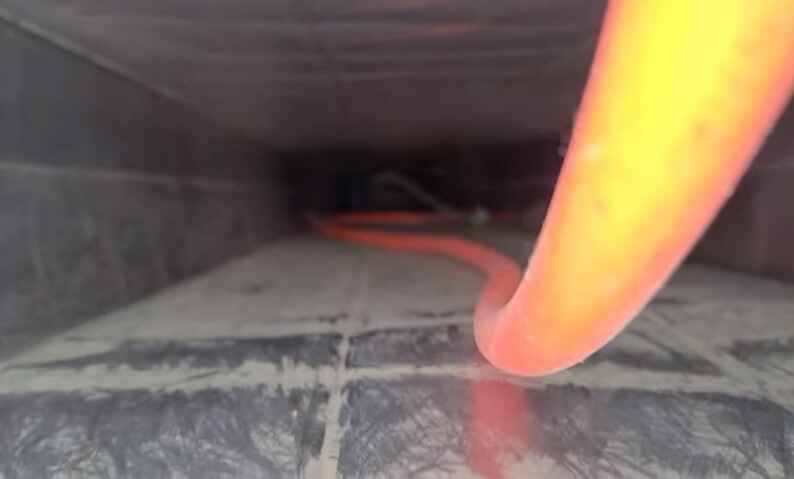
Maintaining clean air conditioner ducts is essential for ensuring efficient cooling, improving indoor air quality, and extending the lifespan of your HVAC system. Here are some tips to help you keep your air conditioner ducts clean:
1. Regular Inspection:
Perform regular visual inspections of your ductwork to check for any visible signs of dust, mold, or debris. If you see any issues, address them promptly.
2. Change Air Filters:
Change or clean your air filters regularly. This is one of the simplest and most effective ways to prevent dust and debris from entering the ducts. Follow the manufacturer’s recommendations for the frequency of filter replacement.
3. Use High-Quality Filters:
Invest in high-quality air filters that can trap smaller particles, such as dust, pollen, and pet dander. HEPA (High-Efficiency Particulate Air) filters are particularly effective in capturing tiny particles.
4. Duct Sealing:
Ensure that your ductwork is properly sealed to prevent the entry of contaminants from unconditioned spaces, such as attics or crawl spaces. Use mastic or metal-backed tape for sealing any gaps or leaks.
5. Professional Duct Cleaning:
Schedule professional duct cleaning services periodically, especially if you notice significant dust buildup or if you’ve recently completed home renovations. Professionals have the equipment to thoroughly clean the ducts.
6. Control Humidity:
Maintain indoor humidity levels between 30-50% to prevent mold growth. Use dehumidifiers if needed, especially in damp areas like basements.
7. Keep Vents Clean:
Regularly vacuum and dust the air vents and registers to prevent the circulation of dust into the ducts.
8. Preventive Pest Control:
Seal any openings in your home to prevent insects or rodents from entering your ductwork. Pests can introduce contaminants and create nests, causing blockages.
9. Proper Ventilation:
Ensure proper ventilation in your home to reduce the accumulation of indoor air pollutants. Use exhaust fans in kitchens and bathrooms to remove excess moisture and pollutants.
10. Monitor for Mold:
Keep an eye out for signs of mold growth in and around your ducts. If you see mold, address the issue promptly, as it can adversely affect indoor air quality.
11. Regular HVAC Maintenance:
Schedule regular maintenance for your HVAC system, including the inspection and cleaning of components like coils and blower fans. A well-maintained system is less likely to distribute contaminants.
12. Consider UV Lights:
Install UV lights in the HVAC system to help kill bacteria and mold that may accumulate on the coil and other components.
Remember that the frequency of maintenance tasks may vary depending on factors like the climate, the number of occupants in your home, and any pre-existing conditions in your HVAC system. Always refer to your HVAC system’s manual and consult with professionals when needed.
Conclusion
In conclusion, maintaining clean air conditioner ducts is essential for a healthy and efficient HVAC system. Regular cleaning not only improves indoor air quality but also enhances the overall performance of the unit, leading to energy savings. By following the simple steps outlined in this guide, you can ensure that your air ducts remain free from dust, allergens, and contaminants. A cleaner and well-maintained air conditioning system not only promotes a healthier living environment but also extends the lifespan of your equipment. Invest a little time and effort in duct maintenance, and enjoy the benefits of a fresher and more comfortable home.

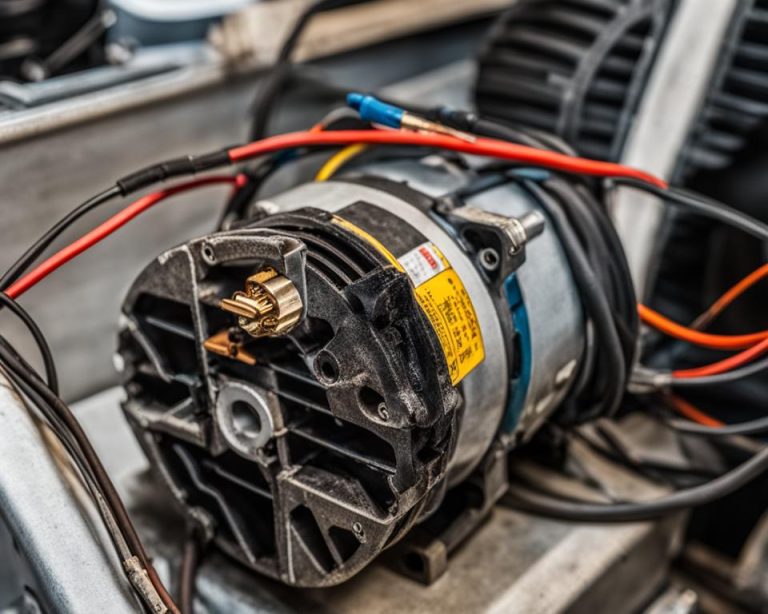
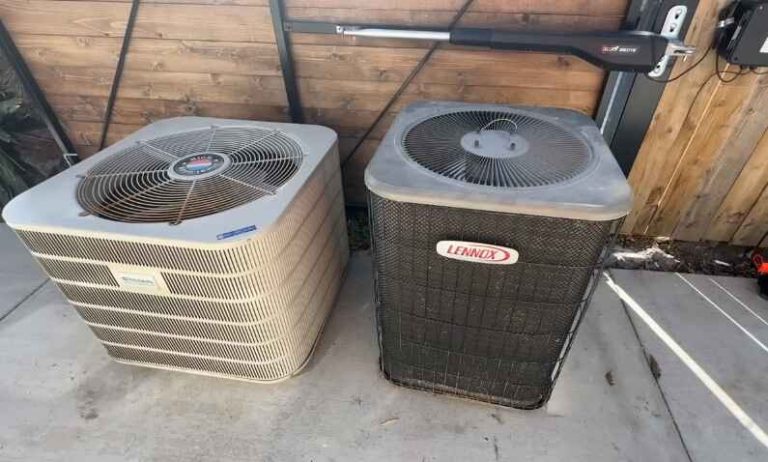
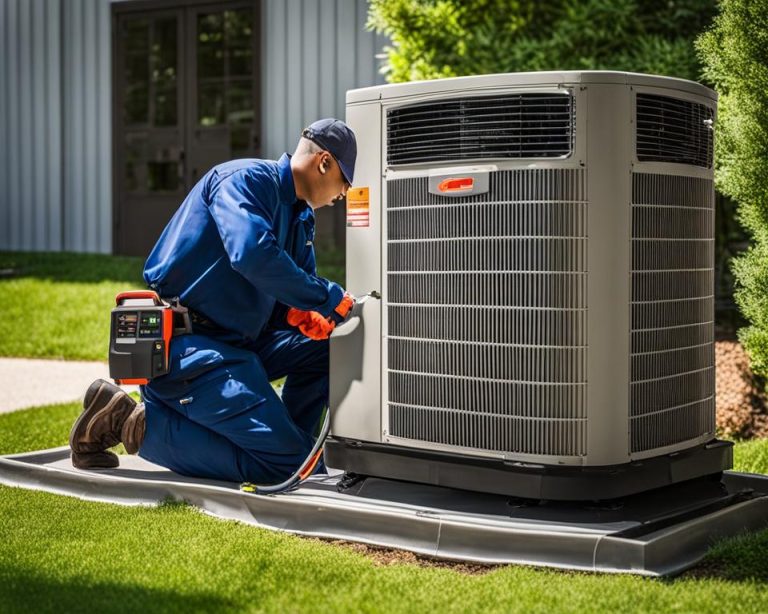

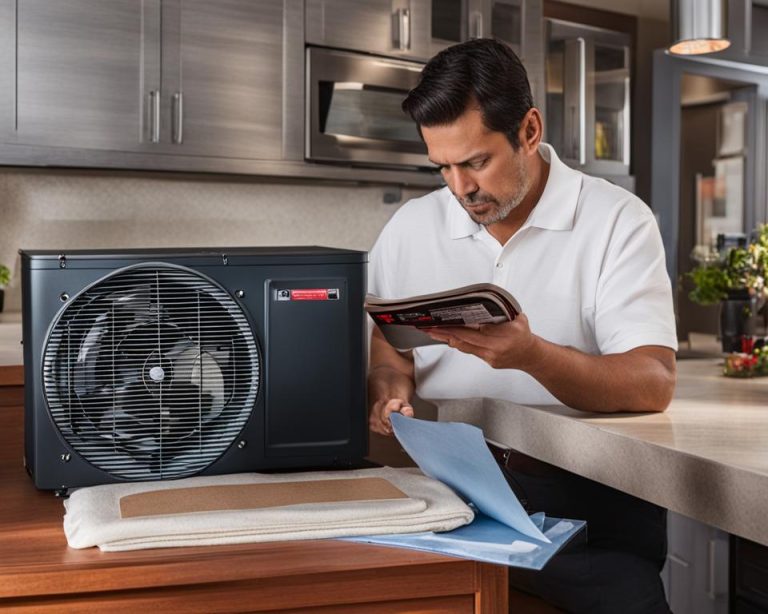

19 Comments